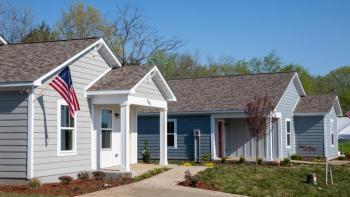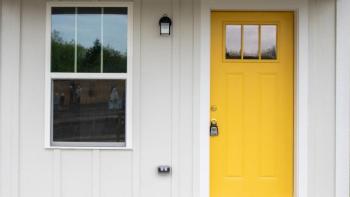
Research series: Outcomes associated with homeownership
Improving affordable homeownership leads to numerous outcomes that extend beyond the house. In the U.S., these include greater economic stability, access to quality education, increased civic and social engagement, better health, and a reduced environmental footprint.
Through a series of evidence briefs, Habitat is bringing to light research on the impact that affordable housing has on individuals and families at home and beyond. This brief provides an overview of how families can prosper with greater access to decent, affordable housing. Check out our highlights below and download the full brief.
Research highlights
Wealth and financial stability
- U.S. homeowners have an average net wealth that is 400% higher than that of renters with similar demographics and earnings, and home equity represents the largest proportion of wealth (34.5%) for U.S. households.
- Research has shown a correlation between homeownership and increased wealth, with each year of homeownership tending to be associated with an additional $9,500 in net wealth, on average.
- In 2019, net wealth was lower for lower-income ($9,300), Black ($24,100) and Hispanic/Latinx households ($36,050) than for higher-income ($1,589,300) and white households ($189,100). Home equity represented a larger share of net wealth for low-income households and Black and Hispanic/Latinx households.
Civic and social engagement
- Homeowners are more likely to vote in local elections than renters in comparable neighborhoods, and this likelihood increases with the degree of neighborhood disadvantage in low-income urban areas.
- Regardless of the length of time they have owned a home, homeowners are 1.3 times more likely to become involved in a neighborhood group and to join a civic association than renters. The increased participation in neighborhood groups holds true in low-income neighborhoods as well.
Environment
- For older single-family homes, weatherization reduces low-income households’ total energy costs by 12.4% within the first year. This is substantial given that low-income households have higher energy burdens, spending three times the share of their annual income (7.2%) on energy costs as compared with other households (2.3%).
Education
- Children of low-income homeowners are 11% more likely to graduate from high school and are 4.5% more likely to complete post-secondary education than children of low-income renters.
- Homeowners can leverage their housing wealth to finance post-secondary education for their children, especially lower- and moderate-income households. For lower- and moderate-income households, a $10,000 increase in housing wealth raises the probability of college attendance by 14%.
Health
- Decreasing housing costs for cost-burdened households (those spending more than half of their household expenditures on housing) releases resources to spend on nutritious food and health care and limits overcrowding to minimize the spread of respiratory infectious diseases.

